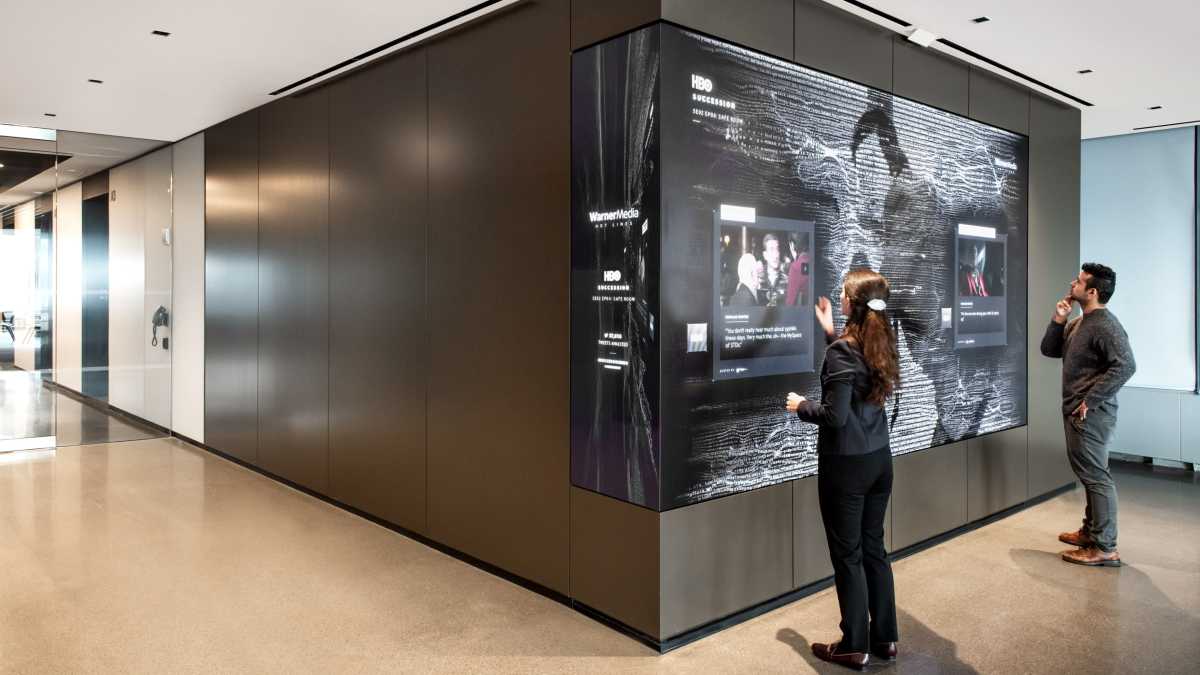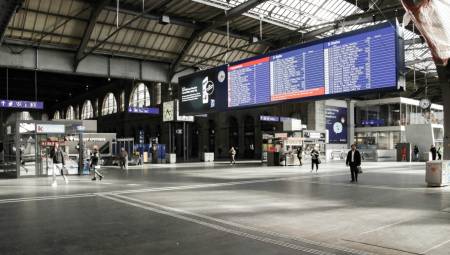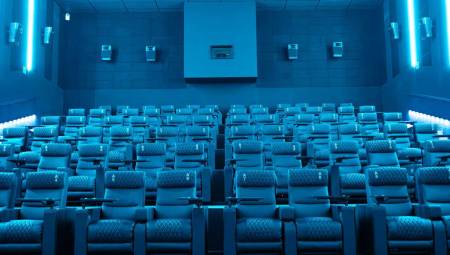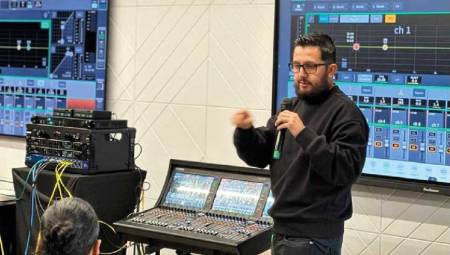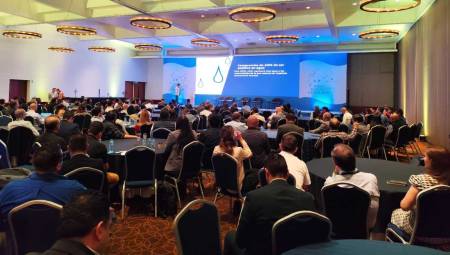Latin America. In contrast to other sectors of the professional audiovisual industry, Digital Signage remained active in recent months and is forecast to enjoy a solid growth rate worldwide, including Latin America, starting this year.
However, in the opinion of Latin American professionals, there are a number of pending tasks that must be addressed to strengthen this growth. Attracting the investment of bold customers, generating better content, creating two-way solutions and professionalizing its employees will be essential to approach the state of maturity that the sector is experiencing in Europe or the USA.
According to data from the recent IOTA 2021 report prepared by AVIXA (the Audiovisual and Integrated Experience Association), the global revenues of the sector will be 32 billion US dollars in 2021 and will maintain their upward step to reach 44.7 billion in 2026. These figures represent 13.86% of the revenue of the entire AV industry in 2021 and 13.59% in 2026. In this way, digital signage applications are only behind the Conference and Collaboration applications (18.74%), and at the same level as those of Education and Learning (13.86%).
According to Boris Dallafontana, digital signage enthusiast and member of DS Latam (Digital Signage Association Latin America) the sector was already experiencing good growth before the pandemic, but this accelerated due to the need for companies to find new ways to communicate with their audience. Innovative contactless applications and the detonation in the use of resources such as QR codes, became an effective alternative to touch screens that people stopped using to prevent contagion.
In a recent meeting of DS Latam, avixa's partner organization, two of its members, Jorge Sánchez (Corporate Multimedia) and Jaime Sánchez Mellado (Promo Espacio) agreed that users with more experience in digital signage and with points of sale (retail, fast food restaurants, hospitality) were the ones who, in the face of the challenges of the pandemic, they looked for new applications and ways to keep in touch with their customers, which has contributed to keeping the business healthy.
In Latin America, during 2021, Digital Signage applications will occupy the sixth place in revenue in the AV industry in the region, although with a sustained growth of around 10% per year, much higher than the 4.56% average growth of the AV industry in the world. As a context, in Spain, where the sector is experiencing a stage of maturity, applications will be in third place in terms of revenue, with growth and penetration at the same pace as the global industry.
The outlook is also positive when reviewing the areas of AV equipment and services in which the vertical markets of Hospitality and Venues and Events will invest, two of which will live a stage of vigorous recovery from the second half of 2021. After being hit hard in 2020, companies in these markets will invest in different technologies such as video deployment systems and hardware for content management, basic pieces of many of the digital signage solutions.
In addition, the Retail market, which is the main consumer of digital signage solutions in Latin America, will remain among the five verticals that dominate investment in AV technology and services in the world.
Bold and well-prepared professional clients are requested
Although the prospects are encouraging, Dallafontana and her colleagues point out that, in the region, the main applications of digital signage remain unidirectional, that is, purely informative for the public. Bidirectional applications, in which there is an interaction between audience and sender, represent a still very low percentage despite the fact that the necessary technologies (connectivity, high definition cameras, geolocation, sensors, RFID antennas, beacons, high resolution screens and formats, among others) are available in the market.
Sergio Gaitán, Regional Manager for Mexico and Northern Central America at AVIXA, points out that the market expects innovative applications that reach interactivity and amplify the experience from digital signage screens to the personal screens of mobile devices.
The experts consulted agree that in order to take this step, it is necessary to work on the following pending tasks in the region: Capture the investment of bold clients who explore in two-way communication campaigns and at the same time have digital signage professionals very well prepared to identify needs, generate well-supported proposals and find the attractive mechanisms to attract such investments and the confidence of the clients.
Which comes first, the bold customer or the digital signage professional? Sergio Gaitán is clear that it is a matter of cause and effect. Digital signage professionals, from salesperson to technician, must master technology, metrics, opportunity cost or return on investment concepts, and be up to date on marketing, advertising and communication trends. Only in this way will it be possible to win over those bold customers.
Gabriel Cedrone, president of ALOOH Latam (Latin American Association of Out of Home), foresees that this level of specialization will also be on the side of customers who understand digital signage as the heart of the communication of their business. And he anticipates that, as mobile devices begin to incorporate into two-way communication, it will be common to find that restaurant chains or supermarkets have their own digital signage departments.
Dallafontana also emphasizes the importance of creating better content, designed under a communication strategy with measurable objectives, using multiple narrative resources and taking into account that each screen is unique and requires a specific message.
Among other tasks to be solved, they identify the need to expand the use of digital signage inside corporations, manufacturing plants, educational centers or housing complexes. In addition, it will be essential to strengthen its presence in spaces of fairgrounds or massive events in which there are many opportunities for growth. On this last point, Boris Dallafontana will give a lecture at the next AVIXA Congress, in which he will analyze the trends and evolution of technology for these applications.
Generating alliances with associations and companies dedicated to the monitoring, study and analysis of data to know the impact of digital signage campaigns is another of the pending points of the sector.
Finally, the specialists pointed out that the development of autonomous and sustainable systems to provide electricity to digital signage facilities should also be contemplated, with the dual purpose of not depending on the supply of the public grid, very irregular in the region, and promoting the use of clean sources of energy.



